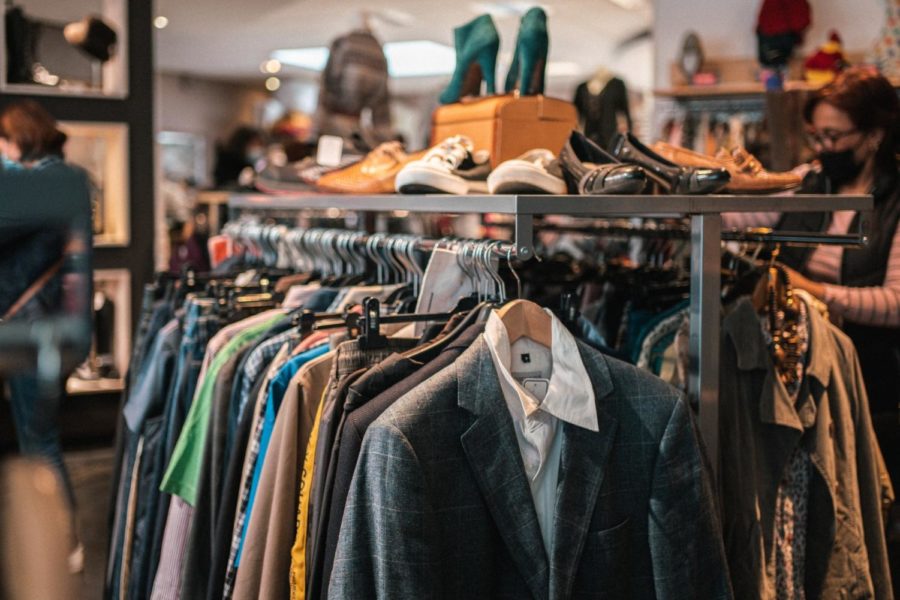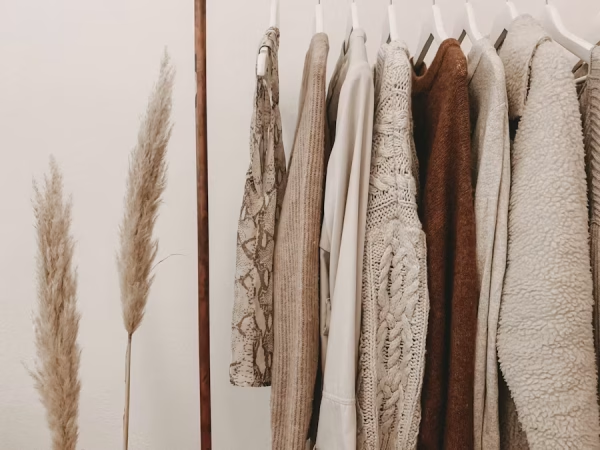thrifting your way to a work wardrobe
Being a “broke college student” and trying to prepare yourself for a professional job can be challenging. Many worry that they will not be able to afford the clothes they need for a professional job. However, there is no need to fear. There is a way to avoid spending a lot of money on professional clothes, and that is thrifting. Thrifting has so many environmental benefits while also benefiting your wallet; it’s the obvious choice. Yet so many people shy away from thrift shopping because they don’t know the tips and tricks of finding unique items that fit their style. To encourage everyone to thrift, here is a guide to thrifting professional clothing in anticipation of graduation.
To start the journey of thrifting a professional wardrobe, one must know what qualifies as a “professional outfit.” There are many different types of professional outfits ranging from work casual to business formal. The workplace dress code will help determine what form of business dress is most appropriate for the new workplace.
Starting with casual, you could choose a plain T-shirt and sweater, button down, or a blouse paired with a nice pair of jeans or khakis.
Business casual is a very common form of dress in the workplace. This includes blouses, polos, button downs or blazers paired with formal skirts or trousers.
An industry with more traditional dress codes may adhere to a business professional dress code. You could wear a dark colored suit and tie, a tidy dress or a blazer look.
Reaching the standards of all these business dress codes is very doable at a thrift store, you just need to know the tips and tricks of thrifting. Knowing where to look is very important in finding hidden treasures. Large chain thrift stores like Goodwill, The Salvation Army and Value World are good places to start, but more often than not their selections are picked over. Local thrift and consignment stores may be a bit more expensive than a Goodwill, but completely worth it, as a lot of the time the clothing quality is better.
Regardless of where one chooses to thrift, there are some key tips for finding the best garments. Check every part of the garment for any stains, tears or holes. Although thrift and consignment stores check for wear and tear issues before putting the garment on the floor, it is always smart to double check when buying secondhand clothing. Mondays and Tuesdays are prime times for thrifting as people will often donate after a weekend of cleaning out their closets. Also, wealthier areas will potentially have more upscale brands and garments in their secondhand stores.
Willa Mumme, a junior fashion merchandising major at Kent State, shared her favorite thrifting tip: “My biggest tip is to not look for anything too trendy, and don’t go to the thrift store with any specific item or style in mind. Walk in with an open mind and if you like something, take a second look at it or try it on.”
While thrifting for a professional wardrobe, it is important to keep in mind that the pieces chosen should be easily interchangeable and timeless garments. When a work wardrobe consists of classics, there is no debate surrounding its professionalism.
Mumme also stressed the importance of a capsule wardrobe. “Look in the blouses and the nicer, dressier clothes and go for the simple items,” Mumme said. “A white button down, no crazy patterns, something that is timeless. Professional clothing is typically very neutral and isn’t too trendy.”
Looking for a classic wardrobe will also make your shopping experience easier as thrift stores typically have an abundance of timeless garments.
Another helpful way to find thrift shops worth shopping at is to use an online thrift shop locator, such as The Thrift Shopper. Thrift shop locators can help give an idea of what the thrift store will have walking in. Most of the time, thrifters will have to look thoroughly through the clothes to find worthwhile pieces, but they can find everything they need to create a timeless professional wardrobe.
Once a capsule wardrobe has been secured from the thrift store, there are still steps you can take to mend the garment. You can mend your thrift finds to make them appear more modern or to fit better.
The first step is to ensure that the garment fits well. You can lengthen or shorten the hem, take in or let out the waist or make any repairs necessary. Just keep in mind that making clothes smaller is easier than making them bigger.
Then, looking at the garment, is there anything outdated that needs to be removed? The trimmings and decorations on thrifted clothing can reflect the time the garment was made, so removing them can bring a garment up to date.
Also you could remove any extra inserts in the garment, such as shoulder pads. Shoulder pads can look very good on a garment, but if they infringe on the desired look, removing them will ultimately bring the garment up to date.
Thrifting a professional wardrobe saves money and is a sustainable option, but can be difficult. You need to be persistent and check everything thoroughly. Just remember to not get too discouraged because you never know what you may find at the next thrift store.
Support Student Media
Hi, I’m Grace Avery, the Editor In Chief of A Magazine. My staff and I are committed to bringing you the most important and entertaining news from the realms of fashion, beauty and culture. We are full-time students and hard-working journalists. While we get support from the student media fee and earned revenue such as advertising, both of those continue to decline. Your generous gift of any amount will help enhance our student experience as we grow into working professionals. Please go here to donate to A Magazine.







